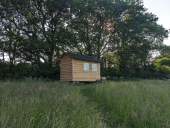
 19
19





Small-holding, coppice and grassland management on a 16-acre site.
 15
15




My tree nursery: https://mountaintimefarm.com/
 8
8






 7
7




Small-holding, coppice and grassland management on a 16-acre site.
 10
10






 7
7




Skandi Rogers wrote:The times I have seen people twisting were with half sticks as well which probably makes it easier.
Small-holding, coppice and grassland management on a 16-acre site.
 4
4




Luke Mitchell wrote:
Very interesting to learn of your stepfather's work and your experience there. I've not had the opportunity to talk to many people who have worked as coppicers - it is mostly old acquaintances of people or others newly picking it up.


 5
5




Small-holding, coppice and grassland management on a 16-acre site.
 6
6




Small-holding, coppice and grassland management on a 16-acre site.
 8
8




Luke Mitchell wrote:For anyone else in my area reading, Coppice Wood College, near Cardigan, is often mentioned in conversation and sounds like a fantastic place. They run courses on coppice management (ash and hazel, I believe) and they only use hand tools (no noisy, polluting chainsaws).
"A society grows great when old men plant trees whose shade they know they shall never sit in."
 6
6




 6
6




Morfydd St. Clair wrote:I'm sorry to be a bit off-topic, but is there such a thing as half-coppicing?
Small-holding, coppice and grassland management on a 16-acre site.
 4
4




 10
10




Small-holding, coppice and grassland management on a 16-acre site.




'What we do now echoes in eternity.' Marcus Aurelius
How Permies Works Dr. Redhawk's Epic Soil Series

|
bacon. tiny ad:
The new gardening playing cards kickstarter is now live!
https://www.kickstarter.com/projects/paulwheaton/garden-cards
|





